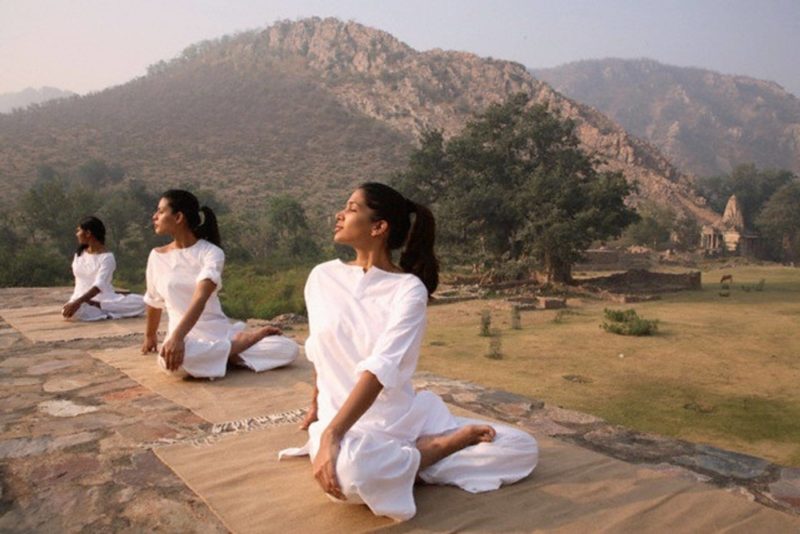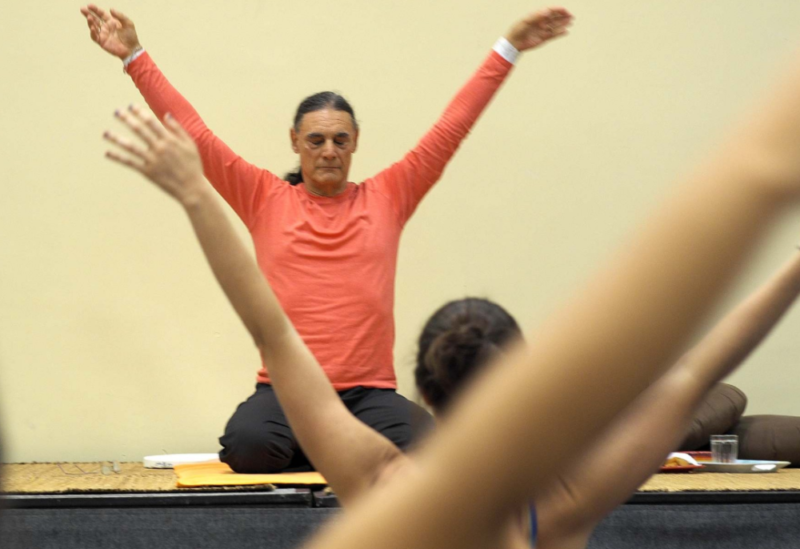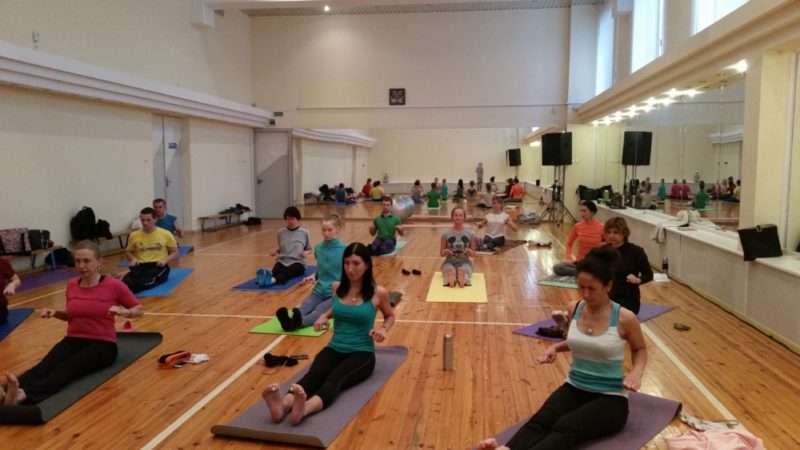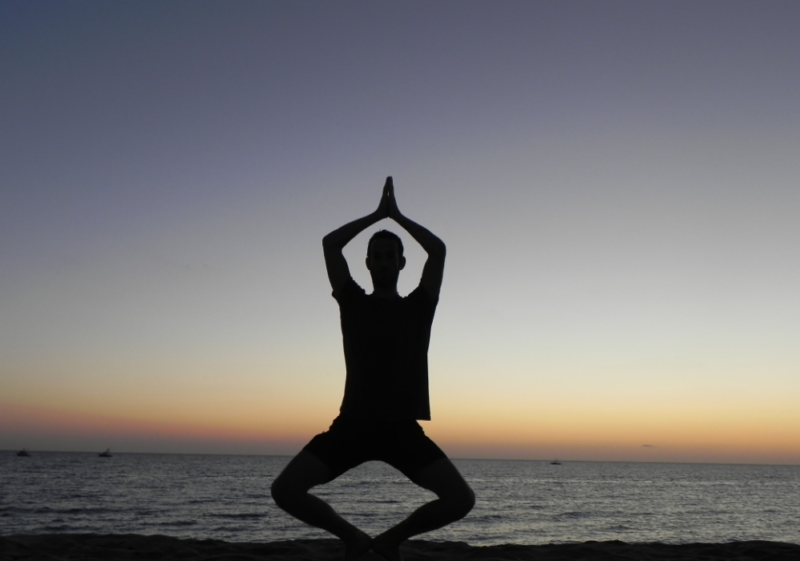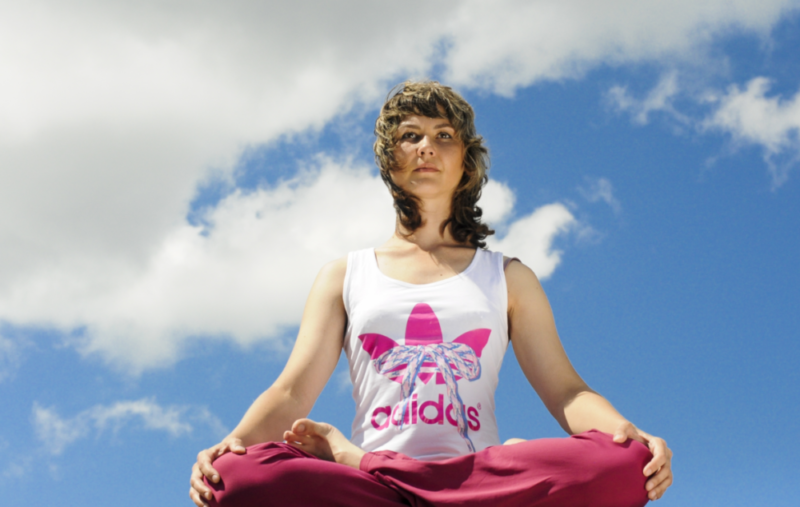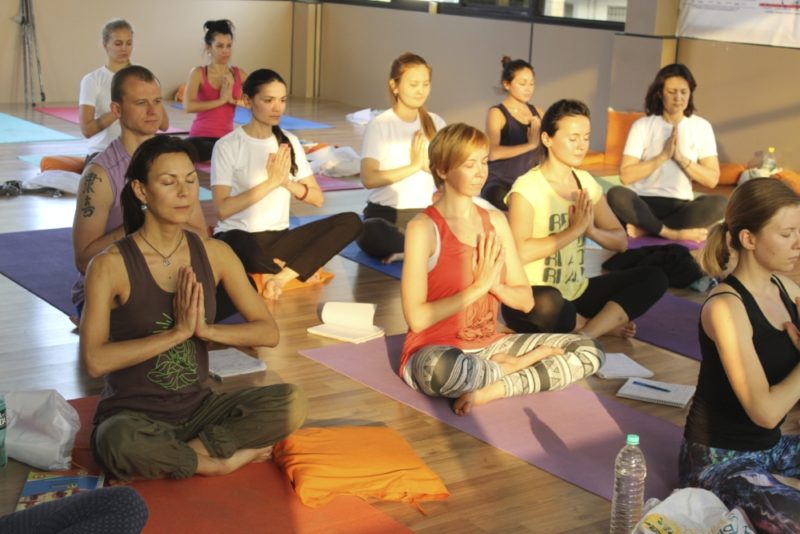Yantra Yoga is one of the oldest Tibetan practices based on Buddhist traditions. It refers to the second section of the Dzogchen teaching called Longde (section of Spaces). This direction is focused on movement, the transition from one asana to another, together with the correct breathing technique. Physical activities here are minimal and are selected in accordance with the capabilities of each person. Classes are allowed to attend children, women in position, persons of senior retirement age.
Material Content:
What is yantra yoga
This practice is a prominent representative of physical yoga, popular in Tibet, which is called "Trulkhor." Translated, this means "magic circle", that is, the system of movement and breathing in dynamics.
Tibetan yoga of movement is designed to gain deep concentration by effort of will. This style does not require special preparation, so it is suitable for modern people who seek to gain vigor and relieve stress. Practice includes the development of three aspects of the human essence - perfecting the body with the help of asanas, speech - through pranayama, mind - through meditation, quiet contemplation.
Yantra yoga is a sequence of special movements that are used when performing ligaments between asanas, performed in one session. Entry and exit from each pose consists of seven consecutive phases, coinciding with the stages of breathing. The latter is especially important in teaching, as it is a source of vital energy (prana), fills our energy centers (nadi).
Lack of physical tension, smooth transitions from one asana to another help to relax the mind, calm the nerves, go to a state of understanding the essence of our existence. In addition, exercises have a beneficial effect on the general condition of the body, help maintain health and balance between the mind, body and energy.
History and description of practice
Until the 70s, the doctrine of the "yoga of the healing movement" passed exclusively from teacher to student. Yantra was born in the VIII century on the basis of the treatise "Union of the Moon and the Sun", created by one of the reincarnations of the Buddha named Vairochana. The doctrine would not have gone beyond Tibet if the Chinese army had not captured its territory in the last century. As a result, a mentor who owned secret knowledge had to hide in different countries.
One of Chogyal Namkhai Norbu's teachers revealed this understanding of yantra yoga to the European community. He managed to get his own knowledge about the Teaching of Great Perfection Dzogchen from his mentor before he began teaching in Italy. Interestingly, this yoga is considered the only one that descended from Buddha, while other directions were founded by mere mortals.
Currently, teaching is becoming more widespread thanks to video lessons, various courses and seminars. The most famous practicing teacher is Fabio Andrico, who visits many countries with his lectures.
The basic rules for meditation
The difference between Yantra Yoga and Hatha Yoga similar to it is that much attention is paid to the mechanism of entering the asana. At the same time, Hatha is aimed at holding one posture for a long time in order to develop her body. The teachings of Vaichorana allow you to improve your mind, organize thoughts, harmonize the basic elements in the human shell - water, fire, air, earth and space.
For women and men, it is envisaged to enter the same position from different sides, since they have a different arrangement of energy channels. It is not recommended to start meditation hungry or tired, as prana can be disturbed. The optimal time for classes is 2-3 hours after eating. You will need a special rug, and the clothes should be free and comfortable.
Training for beginners
Those who decide to understand the basics of Tibetan yoga, you must first familiarize yourself with the canonical texts and go through several psychoenergetic training. At this stage, attention is paid to the eradication of vices through meditation, visualizations, mantras and prayers. Before starting the main classes, they learn to perform asanas, similar to the postures of the Hatka Yoga, synchronizing breathing with the elements of movement.
Any workout that includes activity should open from the warm-up (Zigjong). This is especially important for beginning students. To warm up, relax the ligaments and joints, you need to devote for this most of the lesson. Warm up will help to avoid possible injuries, injuries, muscle sprains during the performance of asanas.
Then comes the line of breathing exercises. First, students spend 9 Lung Ro Salva (inhale and exhale, cleansing the mind and body), then 8 different types of breathing (to cleanse the inner prana). Before the main part of the training, yantras are followed to restore vitality in each chakra.
How is the lesson
After the preparatory phase, the main section of Yantra Yoga begins.
Yoga practice includes:
- breathing exercises aimed at managing energy - pranayama;
- yantras - asanas, the transition from one position to another;
- mastering the technique of yantra;
- breath holding yantras;
- lotus postures, including special breathing techniques.
Yantra yoga consists of 108 elements, among which 75 are the main yantras, 8 - for relaxing Prana, 5 - for the same purpose, but facing the joints and feelings, 5 more - for controlling the channels.In addition, the complex includes 9 breathing exercises, 5 basic pranayamas, 1 - to control the channel, 7 lotuses and 1 wave of Vajra.
Usually the lesson lasts about 2 hours, it is unrealistic to perform all asanas and pranayama during this time. Therefore, for each student, they select a separate simple complex of those movements and postures that will suit him, depending on the level of training.
The effectiveness of Tibetan yoga movement
Regular exercises of Yantra yoga help to fill the energy centers, restore the correct course of prana, release consciousness, prepare for meditation. Practice naturally removes blocks that could appear in a person in childhood. All this contributes to the knowledge of oneself, personal higher goals. Life becomes more harmonious and full.
In addition to spiritual transformations, there is a change in the social circle of communication, improvement in the sphere of personal relations and in a career.
From the point of view of medicine, there are many advantages that beginner yoga acquires:
- improvement of psychological state, reduction of depression, anxiety;
- reducing the effect of stress on the body;
- treatment of pain in the joints and muscles of the limbs, head, trunk, as well as disorders of the nervous system;
- improvement of memory, mental abilities.
Although Yantra does not apply to practices with increased loads, it is worth remembering the limitations. You can not start training for feverish patients, people suffering from arthritis, having a head injury or undergoing surgery less than 6 months ago. It is recommended to undergo examination and consult with your doctor.
The doctrine of Yantra Yoga has more than one hundred years and during this time has gained thousands of followers around the world. It is impossible to say unequivocally that this direction will help everyone, without exception, achieve their goals. Energy practices are as unique as the person himself, so you need to try before forever giving up this or that type of yoga class.


